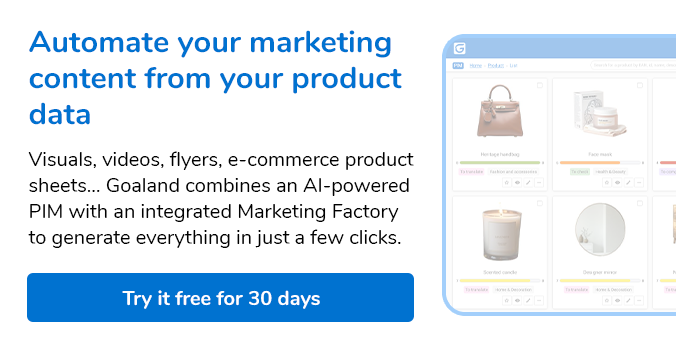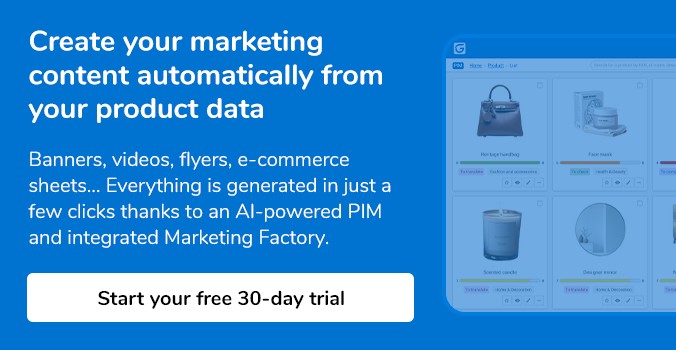Contrary to what you may think, 9 consumer out of 101 still prefer to read a print catalog than its digital version. In our increasingly digital society, paper remains a preferred medium for shoppers.
People continue to prefer print documents because they provide unrivalled readability. With a catalog or brochure,the consumer can spend time attentively reading the information provided, with no interruptions from external sources. Constantly bombarded by screens at other times, this method appears all the more differentiating and less intrusive.
Incidentally, catalogs come out 4th2 among the channels most frequently used to generate sales, right behind mobile apps and websites. So digital has not replaced printed media, in some ways it has actually improved the customer journey by providing variety in the information channels available. This evolution in how information is consumed has made businesses rethink their approach to marketing, encouraging them to use an “omnichannel” approach, with print and digital channels supporting each other.
To get the most from this complementarity, businesses are increasingly using assisted layout solutions. Connected to your PIM, they allow you to use the information from your product database to easily create all types of media within the company: catalogs, flyers, leaflets, brochures… So how does this software increase the interaction between print and digital channels? What are the benefits of using such a solution as part of your print strategy?
#The rise of omnichannel marketing
In an omnichannel context, businesses are progressively understanding the need to manage all their selling channels (print, digital, physical…) as a global and homogenous entity.
73% of today's shoppers3 use several channels during their customer journey. Since the introduction of digital channels, buyers tend to switch easily from one channel to another during their purchase. They often discover an offer in a print catalog, research the product on the brand's eCommerce site and complete their purchase in a store. Buyers like to vary their points of contact, but they also create connections between the experiences from each channel.
This development in consumer behavior pushes businesses to pay more attention to the flow of the customer journey.
#How to guarantee the overall consistency of the customer journey?
75% of shoppers4 expect a consistent experience, whatever the selling channel they use. A difference in price, incorrect stock information, or a catalog promotion that does not exist online… are examples of inconsistencies which could put a buyer off your brand or steer them towards a competitor.

To guarantee the consistency of the customer journey, you must update your product information regularly and on all selling channels: print or digital. If your product offer varies frequently: stock shortages, seasonal offers, launch of a new range or product… each change must be applied to all the channels with which your buyers interact.
#Choose Goaland, to manage all your print catalogs through one interface
Goaland's solution , based on Adobe InDesign Server© allows you to use a unique interface to create all your publications: product catalogs, price lists, product datasheets, brochures, magazines, flyers…
One of the characteristics of the solution is its connectors which enable you to interact with PIM software. It retrieves all the data stored in your product data base to automatically generate InDesign files.
Use the simple, user friendly interface to effortlessly move the different elements in your pages (resize or crop photos, organize information blocks, determine their sizes, add text blocks or photos…) and create customized publications for your customers.
#Goaland and Akeneo PIM, for seamless data synchronization
You already use an Akeneo PIM product database? The Goaland solution is equipped with a dedicated connector enabling it to interact with the Akeneo PIM. Thanks to its native connection with Akeneo PIM, Goaland synchronizes, in real time, all the product data from your PIM: product families, categories, characteristics, images… You can use all the data provided by the Akeneo PIM and integrate it directly into top quality page layouts.
Revise a price, create a category, add a photo… Every time you make a change through PIM Akeneo, the changes are automatically applied to your document. The automatic update features guarantee the accuracy and consistency of the product information in your print documents (flyers, catalogs, brochures, leaflets…).
#Review your catalogs collaboratively for optimum consistency
Many collaborative features providing you with greater control over your company's publications.
Using the validation workflow, you can determine the roles of each person contributing to your publication: editor, approver… When the roles have been determined, each contributor can participate in the creation of the document according to their rights (proofreading, approval…). Throughout the process, you can also make notes in the document: additions, changes, corrections… whatever the indication, a notification will be sent directly to the relevant contributor, enabling them to react quickly to the issue.
AkeneoYour catalog is finally ready? Export your document in your preferred format: low or high definition PDF, printer version…
1hubspot.The Ultimate List of Marketing Statistics for 2020 (Source : https://www.hubspot.com/marketing-statistics).
22017 Global Online Consumer Report. (s. d.). The truth about online consumers.
3Chrum, A. (2017, 08). 10 Stats That Prove the Importance of Product Content for E-commerce . onespace.com
4Jacobson, M. (2020, 25 février). 6 Stats that Prove the Importance of Product Videos for Ecommerce.







